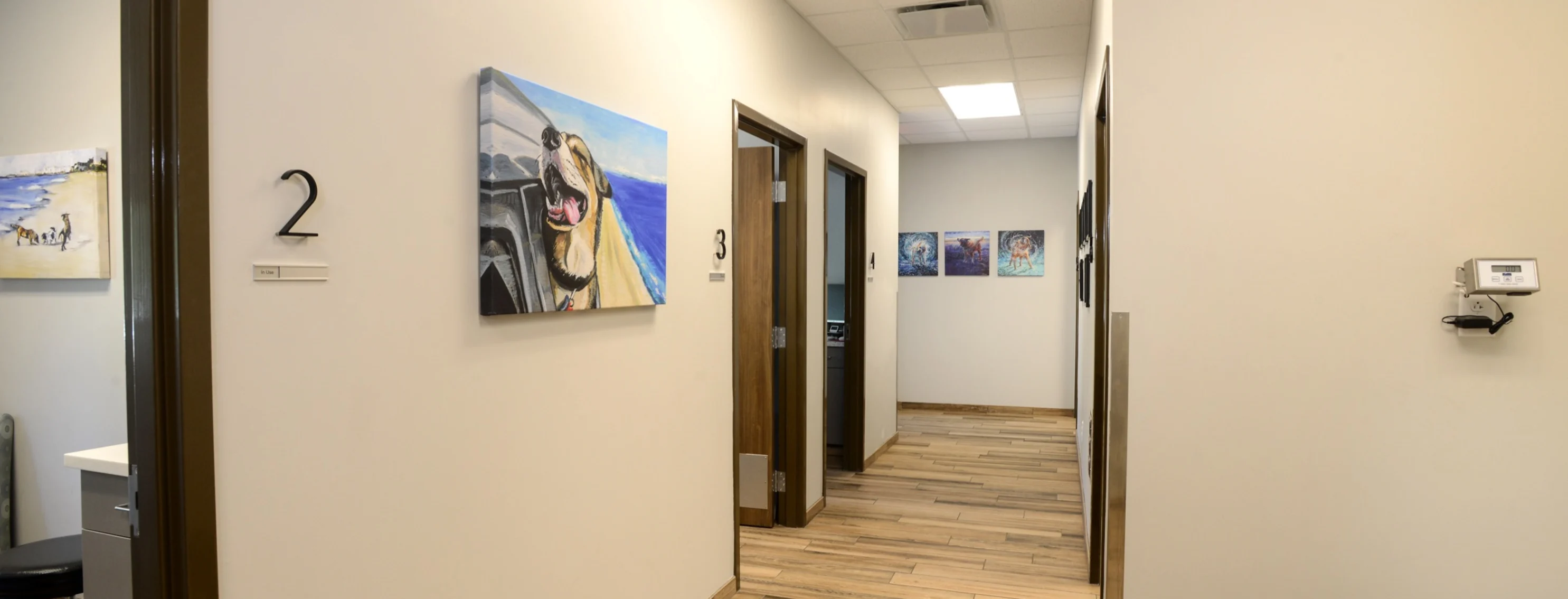Park West Veterinary Associates

X-rays are an important diagnostic tool used to identify what is going on within your pet. An X-Ray allows us to look within the body for abnormalities that we would not be able to see otherwise. Radiography can be used to evaluate almost any organ in the body including the bones, heart, lungs, intestines, liver, bladder, etc. Some of the most common issues we find with X-rays include broken bones, heart failure, arthritis, pneumonia, intervertebral disk disease, and various tumors.
Ultrasound, also known as a sonogram, is a great tool we use to create images of the soft tissue structures within the body. The uses of ultrasound are widespread. This painless procedure allows us to check for pregnancy, evaluate heart function, look for abdominal masses, identify bladder stones, or even identify GI obstructions in those naughty foreign body eaters. We are also able to use ultrasound to collect samples for testing of the urine, lymph nodes, or an abdominal organ. Our doctors pride themselves on their ultrasound capabilities and have spent many hours training to become proficient at imaging your pet. We also have a working relationship with board-certified radiologists whom we confer with about challenging cases.
Your pet's heart is very similar to your own in that it has four chambers and valves and is responsible for pumping blood to the entire body. Certain breeds are predisposed to heart disease, and many breeds develop abnormal valves as they age. We work hard during every visit to listen for abnormalities or symptoms that may indicate heart disease. If your pet does have heart disease, we can perform an echocardiogram, or heart ultrasound, to help determine the exact problem which allows us to decide on the best treatment for your pet.
Many different diseases are diagnosed with bloodwork. We have a full Heska laboratory in our hospital, which gives us the ability to get the answer as to why your pet is sick within minutes. This is the safest and best option in an emergency situation. Rapid diagnosis allows us to create a treatment plan within minutes so we can immediately work on making your pet better. Kidney disease, diabetes, liver disease, and infections are just a few of the problems that we can diagnose quickly with the use of our in house lab equipment. For those less critical disease processes, we utilize outside laboratories to give us precise and accurate results. Some examples of tests that are sent out to the lab include hormone testing, GI panels for chronic diarrhea, titers, tissue biopsies, medication monitoring blood work, etc.
An endoscopy is a procedure used to examine the upper and lower GI tracts with a specialized camera. This minimally invasive procedure allows us to assess and visualize the esophagus, stomach, small intestines and the colon for signs of disease and to take samples for biopsy. Biopsies from an endoscope can diagnose diseases of the lining of the GI tract, but are not able to get full thickness samples, so in some cases other methods may still be needed. The endoscope can also be used to remove some foreign objects such as bones, sticks, rocks, toys, hairballs or coins. Endoscopy may be indicated with vomiting, diarrhea, weight loss, abdominal pain or swelling or loss of appetite.
